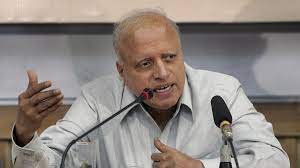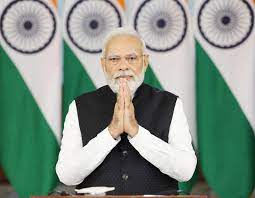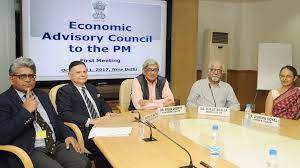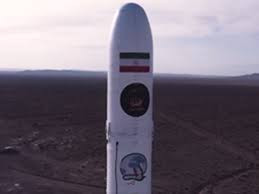Today’s Current Affairs: 30th Sep 2023 for UPSC IAS exams, State PSC exams, SSC CGL, State SSC, RRB, Railways, Banking Exam & IBPS, etc
Table of Contents
Conocarpus Trees:

The state government of Gujarat in India has imposed a ban on the plantation of Conocarpus trees in both forest and non-forest areas due to their adverse impacts on the environment and human health.
- The decision to ban Conocarpus comes after research reports highlighted its adverse effects, including spreading pollen that can lead to diseases like cold, cough, asthma, and allergies.
- Conocarpus trees have deep roots that can damage telecommunication lines, drainage systems, and freshwater systems
- Conocarpus erectus, commonly called buttonwood or button mangrove, is a mangrove shrub that grows on shorelines in tropical and subtropical regions around the world
Dr M S Swaminathan: Passed Away

Mankombu Sambasivan Swaminathan (MS Swaminathan) (1925 to 2023) who passed away recently, played a crucial role in heralding the Green Revolution that helped India combat food insecurity.
- MS Swaminathan Birth date: August 7, 1925.
- Birth Place: in Kumbakonam, Tamil Nadu.
- Swaminathan brought a social revolution through his policies to rescue India from famine-like circumstances in the 1960s.
- He was called the ‘Father of the Indian Green Revolution’.
- Green Revolution a period of rapid, scientific agricultural advancement in the mid-1960s that involved growing high-yielding, disease-resistant varieties of crops, primarily in Punjab, India. Dr. Swaminathan played a key role in this movement.
- These crops produce a higher yield per hectare compared to traditional variants.
- They are often disease-resistant and have increased tolerance to conditions like drought. Examples include IR8 rice and Kalyan Sona wheat.
- The difference between the potential maximum yield of a crop and the actual realized yield for a given area.
20th Edition Of The Times Higher Education (THE) World University Rankings 2024:

20th Edition of the Times Higher Education (THE) World University Rankings 2024 have been released, in which as many as 91 Indian institutes have secured a place.
- The 2024 rankings include 1,904 universities from 108 countries and regions.
- The 2024 Rankings comprehensively assess research-intensive universities worldwide based on 18 key indicators across five areas: teaching (29.5%), research environment (29%), research quality (30%), industry (4%), and international outlook (7.5%).
Indian Universities’ Performance:
- The top university in India, the Indian Institute of Science (IISC), has returned to the global top 250, coming in the 201-250 band, for the first time since 2017.
- The second highest ranked universities in India are Anna University, Jamia Millia Islamia, Mahatma Gandhi University, Shoolini University of Biotechnology and Management Sciences, which are all in the 501-600 band.
- Indian universities made significant gains this year, including five of the countries’ top universities.
- India is now the fourth best-represented nation in the THE World University Rankings, with a record-breaking 91 Indian institutions included in the list.
Global Universities:
- Top Universities: University of Oxford (UK) secured the highest rank, followed by Stanford University (USA) and the Massachusetts Institute of Technology (MIT, USA).
Global Innovation Index 2023:

India retains 40th rank out of 132 economies in the Global Innovation Index 2023 rankings.
- Global Innovation Index 2023 is published by the World Intellectual Property Organization.
- It is a reliable tool for governments across the world to assess the innovation-led social and economic changes in their respective countries.
- This year, the NITI Aayog, in partnership with the CII and the World Intellectual Property Organisation (WIPO), is hosting, virtually, the India Launch of the GII 2023 on 29th September 2023.
- The Global Innovation Index is built on a rich dataset – the collection of 80 indicators from international public and private sources – going beyond the traditional measures of innovation since the definition of innovation has broadened.
- Top 5 countries: Switzerland, Sweden ,United States United Kingdom (4th) and Singapore (5th).
- It listed India as among the 21 economies that outperformed for a 13th consecutive year on innovation relative to level of development.
- It states that India, Iran, Philippines, Turkiye, Vietnam and Indonesia are among the economies within the GII top 65 that climbed fastest in the ranking over the last decade.
- India holds top ranking within the Central and Southern Asia region for Human capital and research (48th), Business sophistication (57th) and Knowledge and technology outputs (22nd).
- Strong indicators include ICT services exports (5th), Venture capital received (6th), Graduates in science and engineering (11th) and Global corporate R&D investors (13th).
e-Cabinet System : Tripura Chief Minister

Tripura Chief Minister launched an e-cabinet system at Agartala to promote digital infrastructure development and digitisation of government services and information.
- e -Cabinet system is a powerful software portal for State Governments to conduct Cabinet meetings electronically and online mode.
- It is developed by National Information Centre (NIC), Ministry of Electronics & IT (MeitY).
- Tripura has become the fourth state—and second in the Northeast—after Uttarakhand, Uttar Pradesh and Arunachal Pradesh, to have introduced an e-cabinet system.
- It maximizes usage of technology in meetings and reduces paper use.
- It automates workflow activities of meetings; before, during and after.
- It is designed for smart tablets, with rich UI and UX elements, for ease of use.
- Push & Pull mechanism built in portal ensures high security needed for Cabinet matters.
- Build institutional memory & knowledge repository, enabling quick search & retrieval.
- For virtual meetings eCabinet is integrated with Bharat VC solution of NIC
CRIIIO 4 GOOD Initiative:

The union Minister for Education and Skill Development & Entrepreneurship launched ‘CRIIIO 4 GOOD’.
- CRIIIO 4 GOOD Initiative is a new online life skills learning module.
- It consists of series of 8 cricket-based animation films to promote gender parity, equip girls with life skills and encourage their participation in sports.
- Using the popularity and passion of cricket young audiences, ICC and UNICEF released these modules to inspire children and youth to adopt critical life skills and appreciate the importance of gender equality.
- The programme is in three languages: English, Hindi and Gujarati.
- The themes of the eight modules are: leadership, problem-solving, confidence, decision-making, negotiation, empathy, teamwork and goal setting and are visualized through state-of-the-art animation using cricketing examples.
- The programme was launched in association with the International Cricket Council, UNICEF, and the Board of Control for Cricket in India.
CALIPSO Mission : NASA

The CALIPSO mission that analysed climate, weather, and air quality ended, the National Aeronautics and Space Administration (NASA) announced recently.
- CALIPSO (Cloud-Aerosol LIDAR and Infrared Pathfinder Satellite Observations) is a mission dedicated to studying how clouds and aerosols impact the Earth’s climate.
- It is a joint project between NASA (National Aeronautics and Space Administration) and CNES (Centre National d’Études Spatiales), the French space agency.
- Launched in 2006, CALIPSO is a satellite-based observatory.
- Scientists are using data from CALIPSO to construct 3D models of the atmosphere that improve our ability to predict future climate change.
- CALIPSO has been part of a constellation of spacecraft called the “A-Train,” including Aqua, Aura, and PARASOL spacecraft, dedicated to studying the Earth’s weather and environment.
- It carries CALIOP, a two-wavelength, polarization-sensitive lidar, along with two passive sensors operating in the visible and thermal infrared spectral regions.
- The lidar emitted pulses of laser light and measured the amount of light that was scattered back by clouds and aerosols. This information was used to create vertical profiles of cloud and aerosol properties, such as their height, thickness, and optical depth.
- CALIOP is the first lidar to provide long-term atmospheric measurements from Earth’s orbit.
Sankalp Saptaah:

The Prime Minister is set to inaugurate a unique week-long initiative, ‘Sankalp Saptaah,’ at Bharat Mandapam, New Delhi.
- Sankalp Saptah is linked to the effective implementation of the Aspirational Blocks Programme (ABP).
- To implement the ABP and prepare an effective block development strategy, “chintan shivirs (brainstorming sessions)” were organized at village and block levels across the country.
- The Sankalp Saptah is the culmination of these chintan shivirs.
- Sankalp Saptah will be observed in all 500 aspirational blocks.
- Each day in Sankalp Saptah will be dedicated to a specific development theme on which all aspirational blocks will work.
- The themes for the first six days are “Sampoorna Swasthya”, “Suposhit Parivar”, “Swachhta”, “Krishi”, “Shiksha”, and “Samridhi Diwas”.
- The last day of the week will be a celebration of the work conducted during the entire week, as “Sankalp Saptah – Samavesh Samaroh”.
- The inaugural programme will witness the participation of about 3,000 panchayat and block-level people’s representatives and functionaries from across the country at the Bharat Mandapam.
Economic Advisory Council To The Prime Minister:

A member of the Economic Advisory Council to the Prime Minister recently said India will soon have the capability to issue 1,00,000 patents in a year
- Economic Advisory Council to the Prime Minister (EAC-PM) is an independent body constituted to give advice on economic and related issues to the Government of India, specifically to the Prime Minister.
- It was set up for the first time in September 2017 with a term of two years.
- Analyzing any issue, economic or otherwise, referred to it by the Prime Minister and advising him thereon, addressing issues of macroeconomic importance, and presenting views thereon to the Prime Minister.
- These could be either suo-motu or on reference from the Prime Minister or anyone else.
- Attending to any other task as may be desired by the Prime Minister from time to time.
- EAC-PM is headed by a Chairperson and consists of eminent economists as members.
- It is supported in its functions by a team of officials and administrators.
- There is no fixed definition of the exact number of members and staff of the EAC-PM.
- It is common for the Council to be reconstituted time and again with different organizational structures headed by various economists who are of recognized international eminence.
- For administrative, logistic, planning, and budgeting purposes, the NITI Aayog serves as the nodal agency for the EAC-PM.
Noor-3 Satellite:

Iran recently launched Noor-3 imaging satellite into space.
- Noor-3 Satellite is an imaging satellite developed by Iran.
- It is a satellite with potential spying capabilities, boosting Iran’s abilities in space.
- It has been put in an orbit 450 kilometers (280 miles) above the Earth’s surface.
- It was launched by the three-stage Qased, or messenger carrier.
- The spacecraft’s two predecessors, Noor-1 and Noor-2, launched in April 2020 and March 2022, respectively, also atop Qased rockets.
- Noor-1 fell back to Earth in April 2022, but Noor-2 remains operational and may work in concert with Noor 3 when the latter satellite comes online.
- The launch was carried out by the aerospace arm of Iran’s paramilitary Revolutionary Guard.
- The Guard operates its own space program parallel to Iran’s regular armed forces and answers only to Supreme Leader Ayatollah Ali Khamenei.
- It launched its first satellite into space in April 2020 (Noor-1)




